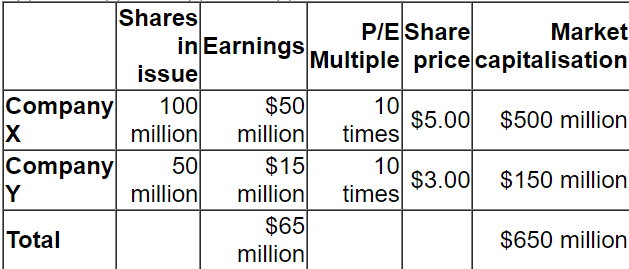CIMA F3 - Financial Strategy
The International Integrated Reporting Council (IIRC) was formed in August 2010 and brings together a cross-section of representatives from a wide variety of business sectors.
Â
The primary purpose of the IIRC's framework is to help enable an organsation to communicate how it:
A company based in Country D, whose currency is the D$, has an objective of maintaining an operating profit margin of at least 10% each year.Â
Â
Relevant data:
   • The company makes sales to Country E whose currency is the E$. It also makes sales to Country F whose currency is the F$.Â
   • All purchases are from Country G whose currency is the G$.
   • The settlement of all transactions is in the currency of the customer or supplier.
Â
Which of the following changes would be most likely to help the company achieve its objective?
A company is preparing an integrated report according to the International
Â
Which THREE of the following should be included in the report?
Company P is a pharmaceutical company listed on an alternative investment market. Â
The company is developing a new drug which it hopes to market in approximately six years' time.
Company P is owned and managed by a group of doctors who wish to retain control of the company. The company operates from leased laboratories with minimal fixed assets.Â
Its value comes from the quality of its research staff and their research.
The company currently has one approved drug which generates sufficient cashflow to cover day to day operations but not sufficient for major new research and development.
Company P wish to raise debt finance to develop the new drug.Â
Â
Recommend which of the following types of debt finance would be most appropriate for Company P to help finance the development of this new drug.Â
Company X plans to acquire Company Y.
Â
Pre-acquisition information:
Â
 
Post-acquisition information:
Total combined earnings are expected to increase by 10%
Total combined P/E multiple will remain at 10 times
Â
Which of the following share-for-share exchanges will result in an increase of 10% in Company X's share price post-acquisition?
Listed Company A has prepared a valuation of an unlisted company. Company B. to achieve vertical integration Company A is intending to acquire a controlling interest in the equity of Company B and therefore wants to value only the equity of Company B.
The assistant accountant of Company A has prepared the following valuation of Company B's equity using the dividend valuation model (DVM):
Where:
• S2 million is Company B's most recent dividend
• 5% is Company B's average dividend growth rate over the last 5 years
• 10% is a cost of equity calculated using the capital asset pricing model (CAPM), based on the industry average beta factor

Which THREE of the following are valid criticisms of the valuation of Company B's equity prepared by the assistant accountant?
Assume today is 31 December 20X1.
 A listed mobile phone company has just launched a new phone which is proving to be a great success.
As a direct result of the product's success, earnings are forecast to increase by:
   • 5% a year in each of years 20X2 – 20X6
   • 3% from 20X7 onwardsÂ
Â
Market analysts were very excited to hear the news of the success of the product and future growth forecasts.
Â
Assuming a semi-efficient market applies, which of the following company valuation methods is likely to give the best estimate of the company's equity value today?
A geared and profitable company is evaluating the best method of financing the purchase of new machinery. It is considering either buying the machinery outright, financed by a secured bank borrowingand selling the machinery at the end of a fixed period of time or obtain the machinery under a lease for the same period of time.
Which is the correct discount rate to use when discounting the incremental cash flows of the lease against those of the buy and borrow alternative?
An unlisted company.
• Is owned by the original founders and members of their families
• Pays annual dividends each year depending on the cash requirements of the dominant shareholders.
• Has earnings that are highly sensitive to underlying economic conditions.
• Is a small business in a large Industry where there are listed companies with comparable capital structures
Which of the following methods is likely to give the most accurate equity value for this unlisted company?
A company is considering either exporting its product directly to customers in a foreign country or establishing a manufacturing subsidiary in that country.
The corporate tax rate in the company's own country is 20% and 25% tax depreciation allowances are available.
Â
Which THREE of the following would be considered advantages of establishing the subsidiary in the foreign country?



